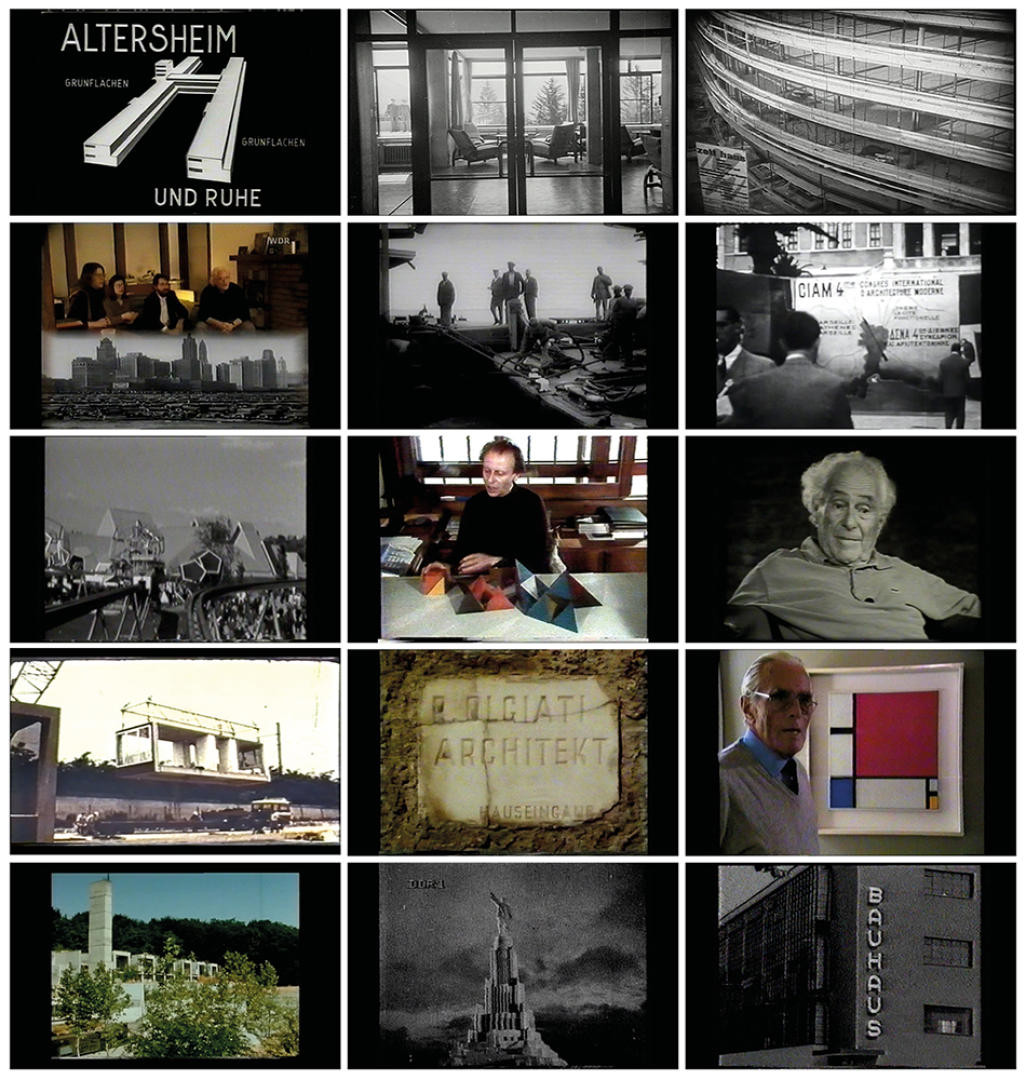gta Films
Along with writings, sketches, photographs, and plans, the gta Archives are also a repository of films. To date, however, this reservoir of knowledge and recollections has remained largely unexamined. This substantial collection of audio-visual documents in different formats includes films by architects, as well as about architects, buildings, and cities, covering various kinds of documentation, from recordings of inaugural lectures and discussion panels, to materials used for teaching and research, stretching to films that were intended for propaganda purposes: in short, this repository consists of a diversified set of fragile materials that has been hardly or not at all researched. Studying this repository is now a pressing matter, not least for conservational reasons.
The exhibition gta Films is conceived as a commentary to the gta 50th anniversary. It foregrounds the fact that our ability to envision the institute’s past depends upon institutional mechanisms and preserved sources. From this perspective, films are in a paradoxical situation. Films are present in architectural archives like the gta Archives, yet these same films are largely absent from architectural history and theory. This state of affairs corresponds to a general tendency in constructing architectural histories, despite the fact that architectural practice has traditionally used the moving image to treat spatial questions – a use that has then been transposed into architectural discourse, documentation, propaganda and teaching. This is a practice that continues today, as demonstrated by the use of renderings and that is currently expanding to include also the field of virtual reality. In this sense, gta Films intends to propel the exploration and reappraisal of the rich filmic repository of the gta Archives.
During the course of the exhibition, more than a dozen films – ranging from silent to sound films from the 1930s to the 1980s – are on display at different locations in the HIL building at the ETH Zurich Hönggerberg Campus. The way in which different visual devices present the films serves to stimulate links between the films and their immediate surroundings, so that architecture could by itself draw attention to their cinematic qualities.
The brochure that accompanies the exhibition includes plans of the HIL building, an introductory essay discussing the contexts and the cinematic characteristics of the films on display, and an explanatory note for each one of the films.
